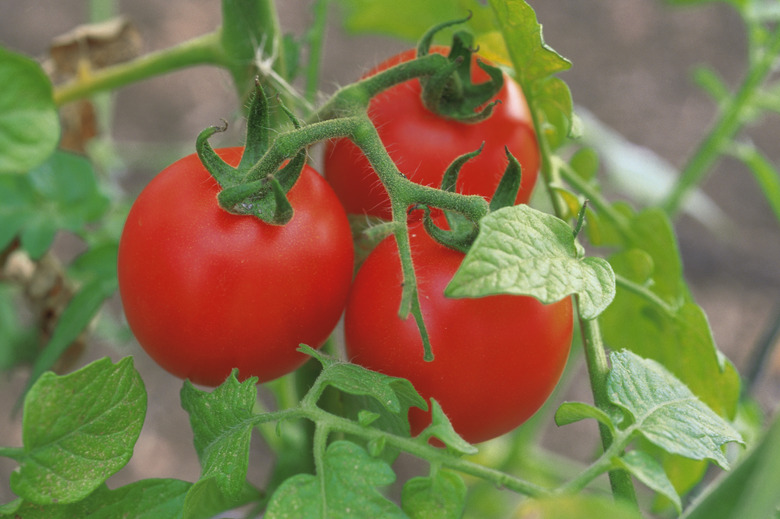Remedies For Leaf Curl In Tomato Plants
Remedies for leaf curl in tomato plants (Solanum lycopersicum, USDA zones 10-11) depend on the cause of the curling leaves. Tomato yellow leaf curl virus is one possible cause, but your tomato growing practices could also cause the leaves to curl. Physiological leaf curl happens when moisture, nitrogen, temperatures and other environmental stressors damage the plant. Figuring out why your plant's leaves are curling helps you decide on the best treatment.
Tomato Plant Viruses
Tomato Plant Viruses
Several viruses can cause the leaves to curl or roll. When viruses are the cause, you'll typically notice the curling in the new leaf growth first.
Tomato yellow leaf curl virus is a common cause. Whiteflies transmit this virus to your plants, so controlling whitefly infestations can reduce the risk of your tomatoes developing it. You'll notice cupping and a pale color in the new leaves. All leaves might have a yellowish tint around the edges and purple veins on the bottoms of the leaves. You might notice that the plant growth slows or fruit production decreases.
Tomato mosaic virus can also cause your tomato plant leaves to curl. You can spot this virus from other causes by the mottling on the leaves. Fruits that are infected have browning inside.
There aren't any remedies for leaf curl in tomato plants due to viruses. If you have multiple tomato plants, removing and destroying the infected plants can help keep the virus from spreading to others.
Prevent viruses in your plants by controlling weeds, which can harbor insects that spread the viruses. Disinfect all of your garden tools, such as bypass pruners, especially if you use them on infected plants, as the viruses can spread from one plant to another through the tools.
Effects of Herbicide Drift
Effects of Herbicide Drift
Herbicide applied in other areas of your yard can drift and land on your tomato plants, causing the leaves to curl. Even compost can be a source of herbicide damage if it contains herbicides with a long life. When herbicide is the cause, it usually affects the new leaf growth first.
You can prevent herbicide damage by applying the chemicals on days without a breeze. Use a separate garden sprayer for herbicides. Never use that sprayer for applying treatments to your tomato plants, as some of the herbicide could remain in the sprayer.
If your tomato plant has minor herbicide damage, it will likely continue to produce. While the damage that's already done can't be repaired, the plant might continue with new growth. Severe or ongoing herbicide damage could kill the plant.
Physiological Tomato Plant Leaf Curl
Physiological Tomato Plant Leaf Curl
Environmental stress can cause the tomato plant leaves to curl. Too much or too little water, too much nitrogen and excessive heat are examples. Temperature changes in late spring and early summer can cause leaf curl. Hot, dry weather can increase the chances, especially during active growing and fruit development periods when the plant's water demands are higher. You might notice leaf curl when you first transplant seedlings due to shock. Too much pruning or damage to the roots can also cause physiological leaf curl.
Physiological leaf curl sometimes causes leaf thickening, creating a leatherlike texture. The color tends to remain the same, which is how you can differentiate this type of leaf curl from viruses. The lower leaves tend to be affected first with the curling eventually affecting more of the leaves if the problem isn't corrected.
This type of leaf curl doesn't usually affect the plant's production, especially if it's due to transplant shock or changing temperatures. The leaves will stop curling once the stressor is gone. For other physiological causes, correct the issue to reverse the leaf curl. If you continue inconsistent watering or other practices, you might notice that your yield decreases. It can also cause blossom end rot, which happens when the plant doesn't get enough calcium.
References
- University of Missouri Integrated Pest Management: Tomato Leaf Curl
- Purdue University Vegetable Crops Hotline: Tomato Leaf Curling
- Texas A&M AgriLife Extension: What Makes Tomato Leaves Twist or Curl?
- Clemson Cooperative Extension Home & Garden Information Center: Tomato Leaves Rolling?
- Missouri Botanical Garden: Lycopersicon esculentum
